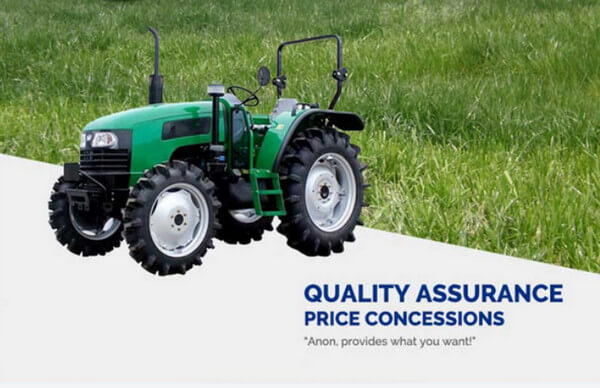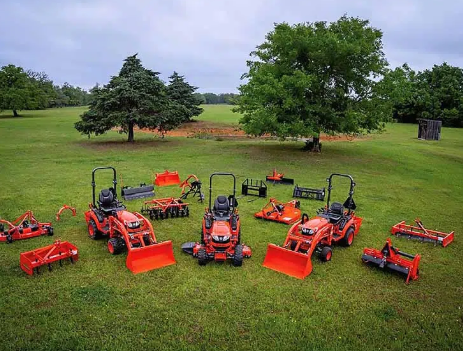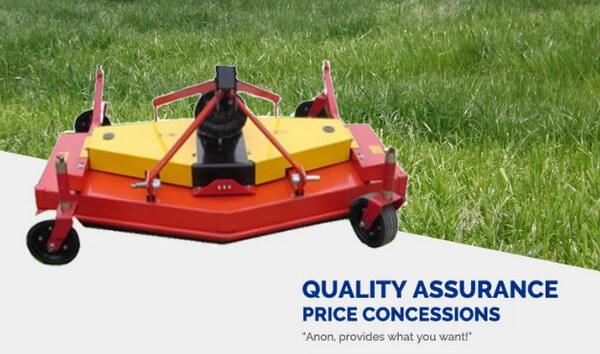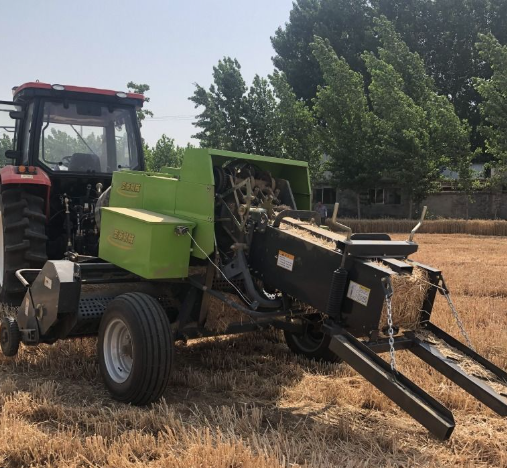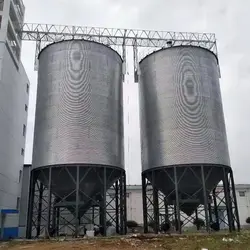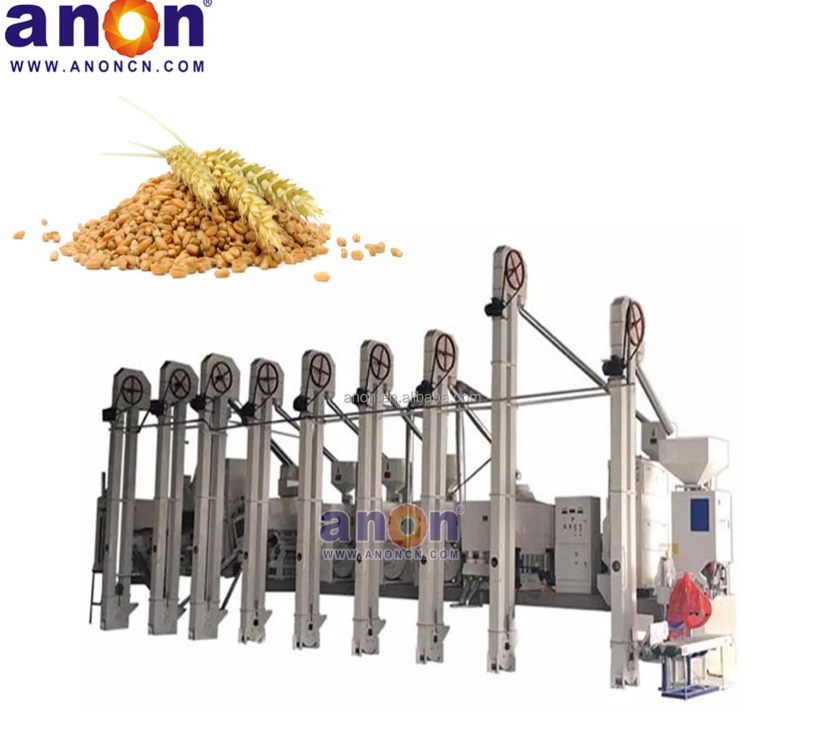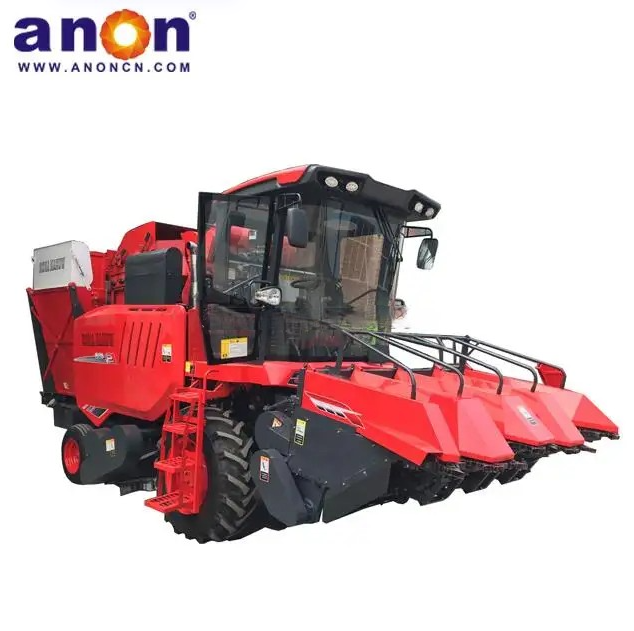Introduction
When running a farm, a hay baler is an essential piece of equipment. On the market, there are mainly two types of hay balers: round balers and square balers. Are you wondering which one is the better choice for your needs? Keep reading! I’ll compare the two from multiple angles—features, working principles, performance, economics, and applications—to help you make the most suitable decision for your farm!
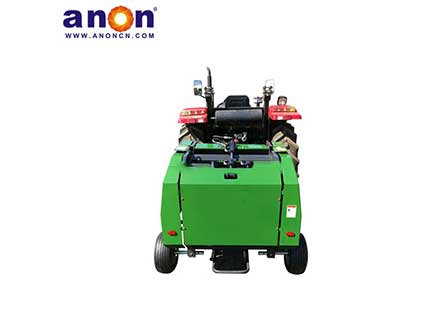
baler
Overview of Round and Square Balers
A hay baler can neatly collect various types of forage, such as pasture grass, rice straw, wheat straw, and even shredded corn stalks. It then automatically compresses and bales the material, making the hay easier to transport and store.
A round hay baler produces cylindrical bales without fixed edges or corners, as the hay is rolled into a compact shape. In contrast, a square hay baler creates rectangular bales by compressing the hay into a box-like form with well-defined edges and corners.
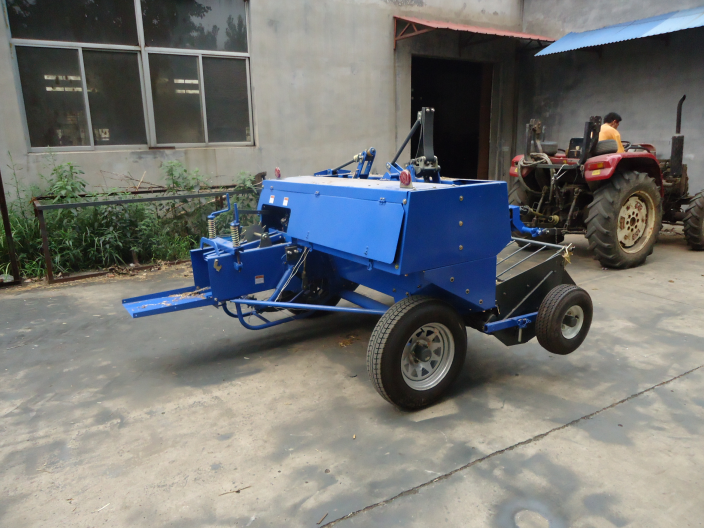
square hay baler
How does a Hay Baler Work?
Both round balers and square balers need to be towed by a tractor, and the pickup mechanism gathers the fallen hay from the field.
For a round baler, the feeding mechanism delivers the material into the baling chamber, where a rotating drum rolls the hay into a tight core that gradually grows into a dense round bale. Once the bale reaches the preset density, the tension switch activates, triggering an alarm. At this point, you stop the tractor, engage the twine clutch to start wrapping the bale. After the set number of wraps, the machine automatically cuts the twine. Then you reverse the hydraulic valve, open the tailgate, and eject the finished bale.
A square baler works differently. The picked-up hay is delivered onto an auger conveyor, which pushes it to the bale chamber’s feed opening. A feeder fork then moves the hay into the compression chamber, where a reciprocating plunger tightly compresses it. When the bale reaches the preset length, the knotter engages, tying two strings securely around the bale. The finished square bale is then pushed out of the chamber by the next incoming hay.
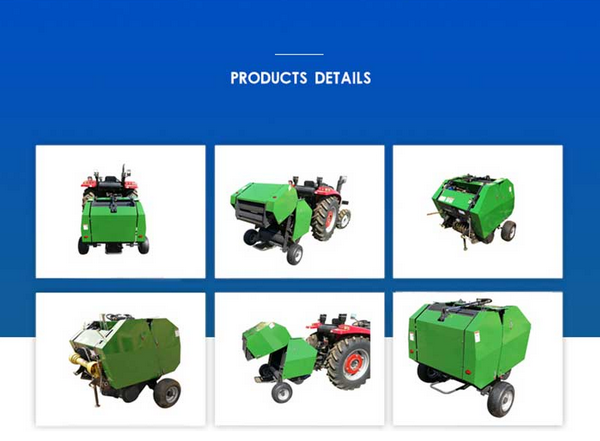
baler
Performance
In terms of the performance of a baler, I think the most important aspects are efficiency, quality, automation level, and the required power for matching. These aspects can effectively showcase a machine.
Efficiency and Work Speed
Under the same conditions, square hay balers can work faster because their bales have a more regular shape. Additionally, round hay balers have to stop picking up hay to tie the bales, which makes their operation less continuous. Typically, a round hay baler can package 80 to 120 bales of hay in an hour, while a square hay baler can package 80 to 240 bales in the same time.
Bale Density and Quality
You can probably tell from the working principles of round balers and square balers that they create very different types of bales.
A square baler compresses material using a piston that applies linear pressure, forcing the forage tightly into a fixed rectangular chamber. This results in more uniform and denser bales, typically 2–3 times more compact than round bales. The benefit is that the forage is more tightly packed, reducing losses during transport and storage. However, in harsh weather conditions, square bales tend to absorb moisture more easily, and once stored, their drying potential is very limited. If hay is baled under damp conditions, there is also a greater risk of internal heat build-up.
On the other hand, a round baler uses a rolling compression method, creating a bale with a wraparound pressure. This leaves some air gaps between the forage layers, giving the bale better breathability and reducing the risk of mold. While round bales can also deteriorate in the rain, their larger size means they are less affected in the short term before transport.
So, square bales are denser and more uniform, ideal for efficient storage and transport, but more vulnerable to moisture issues. While round bales have better ventilation, reducing mold risks, but are less compact and take up more space during storage and transport.
Ease of Operation and Automation
Both round balers and square balers require you to operate them by driving a tractor. However, it’s clear that square balers have a higher level of automation compared to round balers. With a square baler, the entire process—from pickup to compression, tying, and bale ejection—is fully automatic, requiring minimal manual intervention. In contrast, a round baler will alert you to stop the tractor when the bale reaches the preset size. You then need to manually engage the twine clutch to start wrapping, carefully release the clutch as the wrapping speed increases, and once the tying is complete, you still need to operate the hydraulic lever to reverse the valve and eject the bale.
Horsepower
Although both round and square balers require a tractor for towing, their power requirements differ. A round baler generally demands less horsepower because of its simpler structure and working principle. In most cases, a tractor with at least 18 hp is sufficient to operate it. On the other hand, a square baler needs to drive a powerful piston to compress the hay while also operating a more complex tying mechanism, which means it requires significantly more power, typically 25 hp or more. So, when choosing between the two, you should also consider how much horsepower your tractor can provide.

Economics
It’s clear that simply comparing the purchase price of a round baler and a square baler doesn’t give the full picture. Next, we’ll look at the two machines from multiple angles—operating costs, maintenance expenses, storage & transport efficiency, and long-term return on investment—to help you make a more well-rounded decision based on all key factors.
Cost
A round baler doesn’t have the knotting system that a square baler requires, so its structure is simpler and the manufacturing cost is lower. For small-scale farmers or individual livestock owners, it offers better cost-effectiveness, allowing them to handle baling work with relatively low financial investment.
In contrast, a square baler needs to compress hay tightly into rectangular bales, which requires stronger materials and a more complex, durable structure, significantly increasing its production cost. Additionally, square balers are generally larger in size compared to round balers, which also makes their price relatively higher.
Maintenance
When it comes to wear parts and maintenance complexity, a round baler has a much lower chance of failure because it simply has fewer vulnerable components—mainly roller bearings, the twine system, and a few other simple mechanisms. These parts are straightforward in design, widely available on the market, and relatively inexpensive. Even if something does break, the repair cost is low. On top of that, the machine’s overall structure is simple and easy to maintain—routine tasks like lubrication and cleaning are hassle-free. Over the machine’s entire service life, this translates to significant savings on maintenance costs.
A square baler, on the other hand, is more complex, containing many precision components such as hydraulic seals, piston assemblies, and intricate knotting systems. These parts experience faster wear under long-term, high-intensity operation. If a failure occurs, it often requires professional technicians and specialized tools, making repairs more difficult and significantly more expensive. Additionally, square balers have a higher replacement frequency for consumables like hydraulic oil and filters. As a result, the maintenance costs of a square baler are noticeably higher than those of a round baler.
Storage and Transportation
Although round hay bales are lighter and easier to move. Weighing about 25–30 kg, light enough for one adult to handle, square hay bales are much more convenient for storage and transport. Square bales have a regular rectangular shape, which allows them to be tightly stacked during loading and transport. This maximizes the use of vehicle loading space. Round bales, on the other hand, are less space-efficient because of their irregular cylindrical shape. They tend to roll during transport, requiring special securing devices to keep them stable. This not only adds extra work but also limits how effectively you can use the vehicle’s capacity. So, whether for storage or transport, square bales are more stable, don’t roll easily, and leave fewer gaps, allowing you to use space more efficiently.
Long-term Return
In the long run, a square baler’s higher work efficiency allows you to complete more baling tasks in less time. This not only saves you valuable time but also frees you up to handle other farm operations. The neatly shaped square bales are easier to load, stack, and transport, helping you save on storage space and reduce transportation costs.
Moreover, because a square baler operates in a near-continuous working mode, it tends to have lower fuel consumption per bale compared to the stop-and-go process of round balers. Over extended use, this can significantly improve your overall economic returns, making it a more cost-effective solution for large-scale or long-term operations.
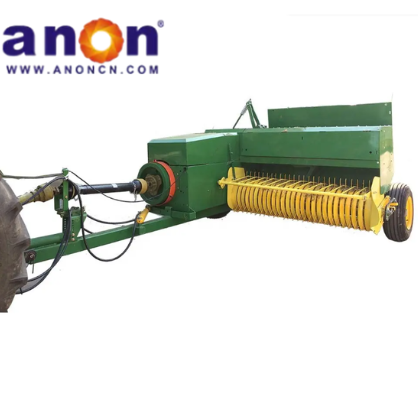
Application
Terrain Adaptability
For small-scale farms and ranches, where the working area is relatively small and the material is scattered, a round baler is an ideal choice. If you’re in hilly or uneven terrain where large agricultural machinery struggles to operate, the better maneuverability and lower terrain requirements of round balers make them well-suited for complex landscapes. In general, round balers are less affected by terrain, so if you’re working in small plots or hilly areas, they are a more practical option.
On the other hand, square balers are better suited for large farms or flat plains. Thanks to their high work efficiency, high-density bales, and easier transport and storage, they are the preferred choice for large-scale operations on open, level fields.
Material Suitability
There are also notable differences between the two when it comes to the types of material they handle best.
Moisture Content
Round balers are better for high-moisture materials (around 30%–60% moisture), such as fresh forage or straw. Their bales are more breathable, making it easier to air-dry the material naturally or prepare it for silage without creating anaerobic fermentation pockets.
Square balers, on the other hand, are better suited for low-moisture materials (around 15%–25% moisture), like dried straw or hay. The high-density compression keeps dry, brittle material intact and reduces damage during baling, handling, and transport.
Material Length and Toughness
Round balers are more adaptable to long, tough materials like long straw or vine-like plants. Their rotary feeding system allows flexible and fibrous material to enter the chamber smoothly, reducing the risk of clogging.
Square balers require more uniform material length. Overly long material may cause tangling, while very short material may leak out during baling. They perform best with evenly cut material, such as straw left after a combine harvester, which is typically at the ideal length.
In summary, round balers are more suitable for small-scale operations or materials with higher moisture content, as well as long or tough materials that require more flexibility. Square balers are better suited for large-scale operations or materials that are drier and have more uniform length, producing denser and more compact bales.
Conclusion
Has the above comparison between round balers and square balers helped you better understand their differences so you can make the right choice based on your needs? If you still have any questions, feel free to contact ANON! Our professional team will be more than happy to assist you and provide the best solution for your farm.
FAQ
1. Can I use a hay baler to bale corn silage?
No, because both round and square hay balers are designed for packaging hay and are not suitable for handling wetter crops. If you want to package corn silage, you should consider buying a silage baler.
2. Are square bales better than round bales?
Using square bales helps improve material handling efficiency in many ways. This is mainly because square bales can hold more material and pack tightly and heavily than round bales. This facilitates logistics and reduces shipping and handling costs.
3. What is the most popular size for circular bundling?
The most common hay bale sizes include square bales 14 inches high x 18 inches wide x 35 inches long, and circular bales 4 feet wide x 5 feet in diameter.
4. How many square bales are equivalent to one round bale?
For example, if the round bale weighs 1000 pounds, then 20 50-pound square bales are equivalent to one round bale. If the large round bale weighs 1200 pounds and the small square bale weighs 40 pounds, then 30 small square bales are equivalent to one round bale.


